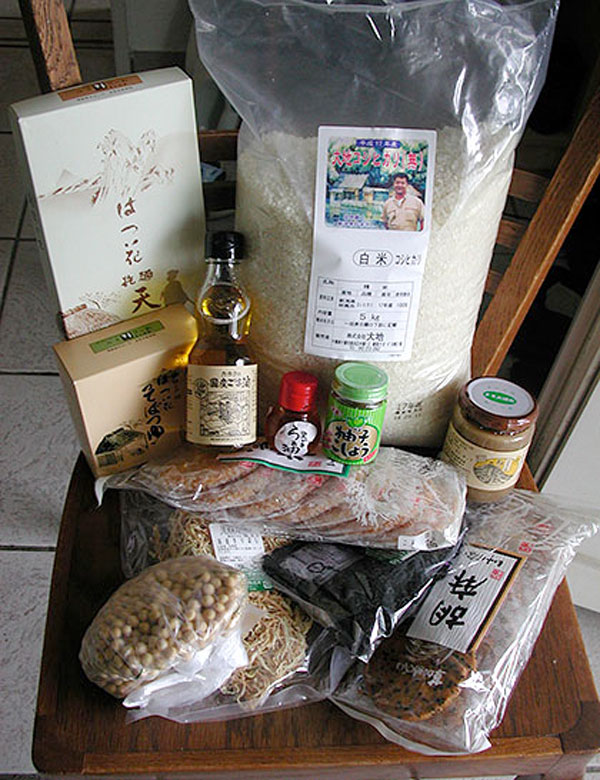
Today's miso soup may not look like miso soup, but it does have miso in it. It shows how to use miso as a background flavoring, instead of the predominant one. Since it has milk and a little butter in it, I've called it Hokkaido style after the northenmost main island in the archipelago that makes up Japan.
Filed under:
japanese soup chicken miso

Continuing my series on Japanese home cooking, this week I would like to introduce different kinds of miso soup. Miso soup (misoshiru) is one of the key parts of a Japanese meal. Another kind of soup that is served often is a clear soup called osumashi, but the miso soup base is more adaptable to all kinds of variations.
Filed under:
japanese soup miso
In my previous post about Japanese food, I talked about what makes up a typical Japanese meal, which applies to breakfast, lunch and dinner. There's a fourth meal that is very much a part of Japanese food life - oyatsu. Oyatsu is snack time, and it's usually eaten at 3 in the afternoon.
Filed under:
dessert japanese snack baking cake
In this episode of my continuing series exploring Japanese food basics, I'd like to explain the breakdown of a typical Japanese home meal, which differs quite a bit from a Western meal.
In Western culture, a meal consists of a light first course or two, followed by a main course, then smaller following courses. The most basic format is soup or appetizer, main course, then a dessert. The main course itself is centered around the protein part, whether it's meat, fish or something vegetarian, and the vegetables are starch are the side dishes.
Filed under:
basics japanese how-to
Submitted by maki on 9 August, 2006 - 17:15

My mother, who lives in Yokohama, occasionally sends me a box of Japanese food goodies. Since she is in her own way as much of a foodie as I am, she diligently scours the land for great sources of locally produced, artisanal and/or organically produced foods. Many of these foods are known under the umbrella term sanchi chokusou(産地直送), direct from where it was produced. If you think French people are hung up on terroir, you should read some Japanese food magazine ads for sanchi chokusou products.
Type:
feature Filed under:
basics japanese ingredients
There was a report in yesterday's Guardian about the supposed dangers of soy products. I am rather dubious about the claims, simply because some of the 'facts' stated about the use of soy beans in Asian cuisine, or Japanese cuisine in particular, are just plain wrong. The implication made in the article is that all soy products are fermented for a long time in Japanese cuisines, but this is simply not true. Only miso and soy sauce and like products - which are only consumed in very small quantities, since they are quite salty - fit that description.
Filed under:
essays japanese legumes ethics philosophy